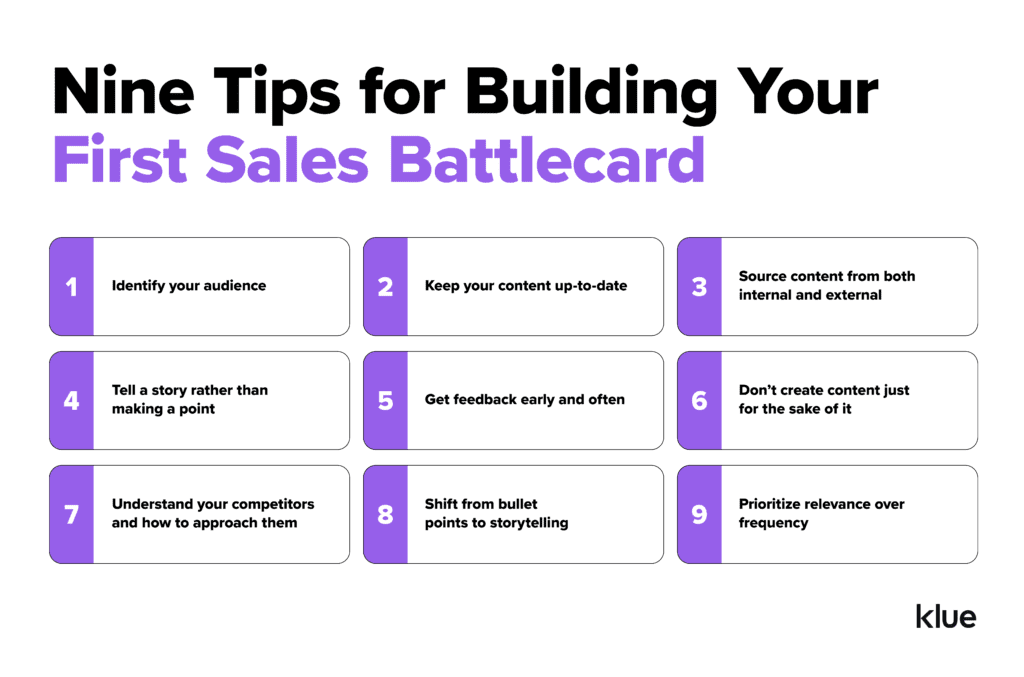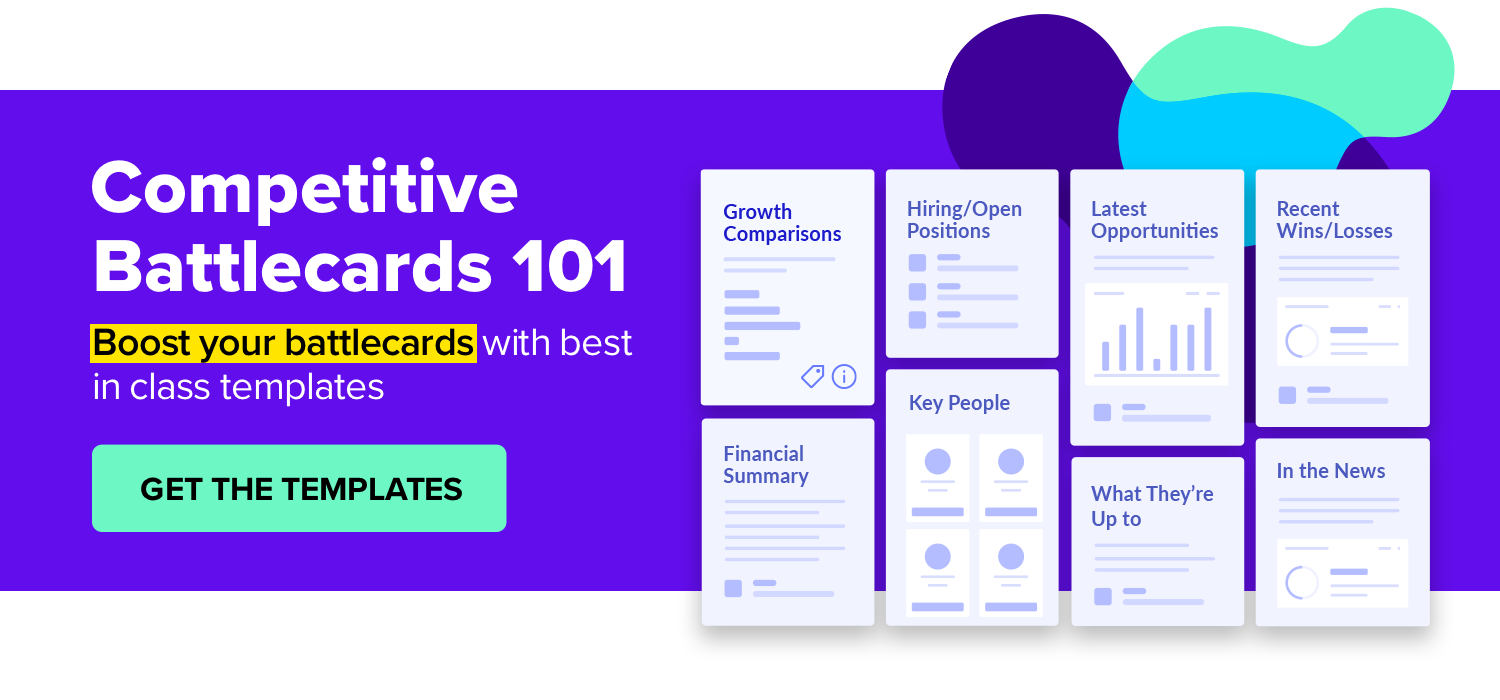Klue Compete
The Competitive Enablement Platform
Learn More
FIND OUT MORE >

Sales battlecards are your most fundamental deliverable as a competitive enablement professional. They’re the fastest path to value, your entry point into sales, and something tangible to point at.
No matter where you’re at in your sales battlecard building journey, these nine tips will keep you on track.


Go beyond “sales” and “customer success” as your audience. Think of the sellers and reps who have to actually use those battlecards.
Talk to them, learn what their lives are like on a day-to-day basis, including the pains they feel. Building sales battlecards without doing that first is a massive mistake.
It’s genuinely the most important thing you can control to improve the adoption of your battlecards. If your content is stale, your reps will lose confidence in your compete content — and they will not be coming back for more.
Leave time and date stamps on your battlecards (and all your compete content, frankly) to let the user know the info is fresh.
Get your battlecards in fine form with our downloadable Competitive Battlecards templates


Third-party data is a crucial ingredient in validating your battlecards. Industry reports, press releases, news articles and more — it’s all data your reps can point to in a call to backup their position.
But no sales battlecard is complete without internal intel. Ex-McKinsey consultant and current economics professor John Horn says the most valuable competitive insights come from internal sources.
“I have built war games for clients over the last 20 years (…) and the best tidbits are from the information inside the company.”


The value your product or service brings to an organization goes well beyond the features and functions. If all your battlecards contain are short sentences about the properties you have that the competitors don’t, you’re doing it wrong.
Instead, you be telling the story of why you’re better — positioning your solution as the best through a powerful narrative woven throughout the entire sales cycle.
Get a pilot group of reps together and start picking their brain to start your battlecard building journey. Past that, you should be continually seeking feedback and iterating based on that feedback.
One tool to get a high-level gauge of how your reps are reacting to your competitive content is through a competitive confidence survey. But this is no substitue for the kind of valuable feedback get from one-to-one conversations.
Watch author and sales coach David Priemer break down his five essential rules for selling against your competitors.
Creating content without thinking through how someone might actually use that content is one of biggest points of failure compete pros encounter.
It’s never a question of how many battlecards you can build. It’s about how can you create the right cards and fill them with the right content to help you win more deals.
Talk to your sellers, your senior leadership, and even industry partners and analysts to get their take on the market landscape. What do they see as your competition’s biggest differentiators?
The more you do this, you’ll start to paint a more holistic picture of your competition. As this picture increases in resolution, you’ll have a better idea of how to beat them.
Battlecards should be more about the why than the what. Bullet points can provide valuable context for a seller. But it’s in the story you tell about why that information is important that will unlock the true value of your sales battlecards — and your compete team as a whole.
Keeping your content fresh doesn’t necessarily mean you have to make changes every single month. Some differentiators will be evergreen.
But what you should be doing is reviewing you battlecards on a regular basis to make sure the content is still applicable and relevant. And don’t forget to leave a time and date stamp when you do.
You don’t have to do it on your own. Check out our free Battlecards 101 Video Series for a deeper look at what it takes to build better battlecards with Klue experts, industry experts and real-life customers.




Competitive Enablement
The topic of Large Language Models (LLMs) has a lot of confusion. Here's what you need to know about how Klue is working with them.


Competitive Enablement
Product Marketing
If your competitive intel game is too strong for automation, too pure for data privacy, and too rebellious for accuracy — then Klue AI is probably not for you.


Let’s do it. Tell us a bit about yourself and we’ll set up a time to wow you.
Let's do it. Tell us a bit about yourself and we'll set up a time to wow you.
XLet's do it. Tell us a bit about yourself and we'll set up a time to wow you.
XSubscribe to get our latest AI functionality and news in your inbox.
XOur Buyer Pulse feature, set to launch in Q2 2024, offers valuable insights into the factors influencing buyer decisions in your pipeline. By signing up for the waitlist, we can better gauge interest and proactively engage with you to streamline the setup and integration process before the feature becomes widely available.
X